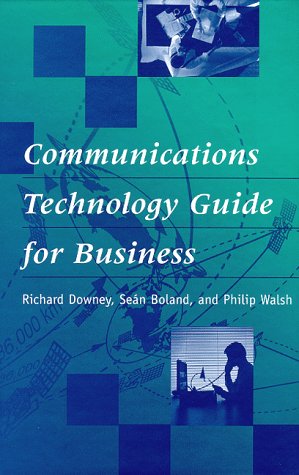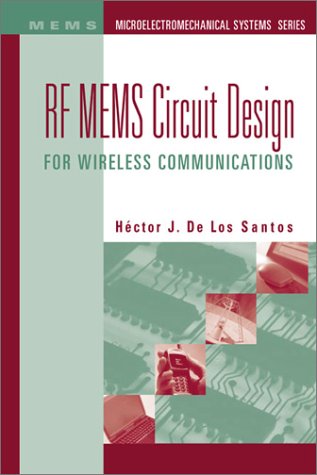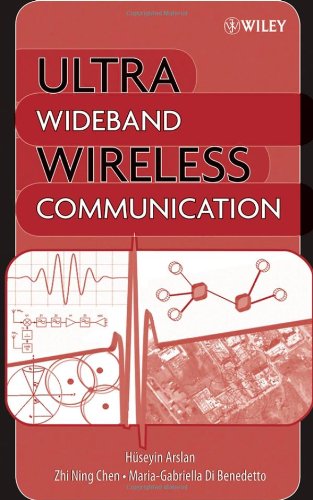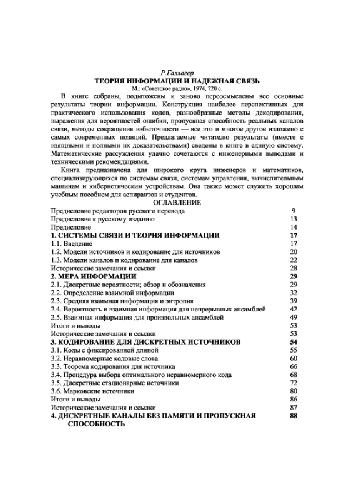Kornel Terplan, Patricia A. Morreale0849331374, 9780849331374
Table of contents :
Contents……Page 8
Acknowledgments……Page 3
Foreword……Page 4
Editors-in-Chief……Page 5
Contributors……Page 7
Contents……Page 0
1.1Trends in Telecommunications……Page 11
Increasing Network Complexity……Page 12
Deregulation and Privatization……Page 13
Communication Convergence……Page 14
Customer Orientation……Page 15
1.1.1.3 Categorizing Services……Page 16
Service Value Levels……Page 17
1.1.1.4 Examples of Services……Page 18
1.1.1.5 Quality of Service……Page 19
1.1.2.1 Introduction……Page 20
Cost Reduction and Control……Page 21
1.1.2.3.1 Business Process Improvement……Page 22
1.1.2.3.2 Cost Management and Control……Page 23
1.1.2.4.1 Building a Telecommunications Solution……Page 24
1.1.2.4.2 Telecommunications Solutions on the Mark………Page 25
1.1.2.4.3 Building the Value Proposition……Page 26
1.1.2.4.4 Building the Value Chain……Page 27
1.1.2.4.5 Aligning the Value Chain……Page 28
1.1.2.5 Summary……Page 30
1.1.3.2.1 The Enterprise Map for a Telecommunicati………Page 31
Benefits and limitations……Page 33
1.1.3.2.2 The Enterprise Economic Model for a Tele………Page 34
1.1.3.3.2 Marketing……Page 36
1.1.3.3.4 Sales……Page 37
1.1.3.3.6 Billing……Page 40
1.1.3.4.1 Marketplace Flexibility vs. Optimal Allo………Page 41
1.1.3.4.2 The Retail–Wholesale Dilemma……Page 42
1.1.3.5 Conclusion……Page 43
1.1.4.1 Introduction: Turbulent Telecom Waters — N………Page 44
1.1.4.2 Elements of Telecommunications Strategies……Page 46
1.1.4.3.1 Growth Options for Incumbents……Page 47
1.1.4.3.2 Growth Options for New Entrants……Page 52
Frequent New Entrant Strategic Problems……Page 55
1.1.4.4 Conclusion: Core Competencies Required to ………Page 57
1.2.1.3 Why Regulation of Telecommunications?……Page 59
1.2.1.4 What Should Be Regulated in Telecommunicat………Page 60
1.2.1.5 The Level of Regulation……Page 61
1.2.1.7.1 The International Telegraph Union……Page 62
1.2.1.7.3 Monopolism vs. Market Forces: The BT Cas………Page 63
1.2.1.7.5 GATS……Page 64
1.2.2 A Model for Assessing Regulation in a Countr………Page 65
1.2.2.1 Legal Framework for Competition……Page 66
Two examples of the role of the regulatory body……Page 67
1.2.2.2.2 Categories of the Regulatory Body……Page 68
Universal service example……Page 71
1.2.2.2.3 Total Overview of the Scoring for the El………Page 72
1.2.2.4 Overview of the Regulatory Environment……Page 74
1.2.2.5 New Developments in Regulatory Environment………Page 75
References……Page 76
1.2.3.2 U.S. Regulation of Foreign Carrier Entry b………Page 77
1.2.3.3 World Trade Organization Agreement on Basi………Page 78
1.2.3.3.1 Substance of Promises Made in the Basic ………Page 79
1.2.3.3.3 Enforcement of the Basic Telecom Agreeme………Page 80
1.2.3.4.2 Open Entry Policies toward WTO Member Co………Page 82
1.2.3.4.4 Other Safeguards……Page 83
1.2.3.5.1 The Status Quo Ante — Before the Telecom………Page 84
1.2.3.5.2 Local Competition Requirements……Page 85
1.2.3.6 Regulation of Information Service Provider………Page 86
1.2.3.6.3 Impact of the ’96 Act on Regulation of I………Page 87
Notes……Page 88
1.2.4.3 The Telecommunications Regulatory Environm………Page 91
1.2.4.3.2 Beyond 1990: A Paradigm Shift……Page 92
1.2.4.4.3 The Regional African Satellite Communica………Page 93
1.2.4.5.1 The Direction of Reform……Page 94
1.2.4.5.2 Nigeria……Page 96
1.2.4.5.3 Highlights of Nigeria’s Telecommunicatio………Page 97
1.2.4.5.4 The Gambia……Page 98
1.2.4.6 Ghana……Page 99
1.2.4.6.2 Telecom Law Reform……Page 100
1.2.4.7 Conclusion……Page 101
1.2.5.1 Satellites as a “Bent Pipe”……Page 102
1.2.5.2 Achieving Interference-Free Operation……Page 103
1.2.5.5 Allocating Satellite Frequencies……Page 104
1.2.5.5.2 Signal Compression Technologies……Page 105
1.2.5.5.9 New Satellite Designs Embrace the Digita………Page 106
1.2.5.6 Satellite Trends……Page 107
1.2.5.6.1 A Changing Business Environment……Page 108
1.2.5.6.3 Service to a Mobile, Wireless, and Netwo………Page 109
1.2.5.6.5 Satellites in a Global Information Infra………Page 110
References……Page 111
1.2.6.1.1 Comparative Hearings……Page 112
1.2.6.2.1 The Existing Allocation Process……Page 113
1.2.6.3 Proposals to Improve the Allocation Proces………Page 114
1.2.6.4 Lessons in the U.S. Experience for Other C………Page 116
1.2.7.1 Introduction: The Basis for Regulation……Page 117
1.2.7.2 Wireless Competition and Market Liberaliza………Page 118
1.2.7.3.1 Spectrum Allocation……Page 119
1.2.7.3.2 The Number of Licenses per Market……Page 120
1.2.7.3.5 Comparative Evaluations……Page 121
1.2.7.3.6 Costs and Benefits of Comparative Evalua………Page 123
1.2.7.4 Interconnection……Page 124
1.2.7.4.1 Self-Provisioning of Infrastructure……Page 125
1.2.7.5 Future Issues and Trends……Page 126
1.2.7.6 Conclusion……Page 128
Notes……Page 129
Appendix 1.2.7B — Sample Table of Worldwide Mobile………Page 132
1.2.8.1 Introduction……Page 133
1.2.8.2.3 Reliance on the Marketplace……Page 134
1.2.8.2.6 Access to Basic and Advanced Technology……Page 135
Notes……Page 136
1.2.9.1.1 Scope of Number Portability in the Local………Page 139
North America……Page 140
1.2.9.2 Challenges for Implementation……Page 141
1.2.9.3 Number Portability Basic Capabilities……Page 142
1.2.9.3.3 Specific Number Portability Capabilities………Page 143
1.2.9.4 Introduction Strategies……Page 144
1.2.9.4.1 Temporary Solutions……Page 145
Query on Release with Call Screening……Page 146
1.2.9.4.3 Target Solutions……Page 147
1.2.9.5 Management and Customer Care……Page 148
1.2.9.6 Conclusion……Page 149
1.3.1.1 Scope……Page 150
1.3.1.2 Normalization and Standardization……Page 151
1.3.1.3 Telecommunications and Information Systems………Page 152
1.3.1.5 Models (Standards) Supporting the Manageme………Page 155
1.3.1.6 Models (Standards)……Page 157
1.3.1.7 A Practical Approach……Page 165
1.3.2.1 Information Product — A Choice……Page 168
1.3.2.3 Standards in the Real World……Page 169
1.3.2.4 The IETF……Page 170
1.3.2.5 Microsoft……Page 171
1.3.2.6 Policy Lessons from the Real World……Page 172
2.1.1 Introduction to Telecommunications Services ………Page 174
2.1.3 Service Engineering Definition……Page 175
2.1.4.1 The Intelligent Network (IN)……Page 176
2.1.4.2 The Telecommunications Management Network ………Page 178
2.1.4.3 Telecommunications Information Networking ………Page 180
2.1.4.4 Network Architectures Comparison……Page 181
2.1.5.2 TMN and the Internet……Page 182
2.1.5.3 TINA and the Internet……Page 183
2.1.6.2 Mobile Agents……Page 184
2.1.7 Conclusion……Page 185
References……Page 186
2.2.1 Introduction……Page 187
2.2.2 Stimulus Signaling……Page 188
2.2.3.1 Layered Protocols……Page 189
2.2.3.2 Finite-State Machines and Call Models……Page 190
2.2.3.3 Functional Call/Connection Control Protoco………Page 191
2.2.4.1 Supplementary Services and Intelligent Net………Page 193
2.2.4.1.2 The Basic Call State Model……Page 194
2.2.4.1.3 Remote Operations Protocols……Page 195
2.2.4.2 Cellular Mobile Communications Services……Page 196
2.2.4.3 B-ISDN and the Functional Separation of Ca………Page 198
2.2.5 Object-Oriented Signaling……Page 199
2.2.5.2 Telecommunication Information Network Arch………Page 200
2.2.5.3 Examples of Exploratory Work on Object-Ori………Page 201
2.2.6 Conclusions……Page 202
References……Page 203
2.3.1 Introduction……Page 204
2.3.2.1 Cell Assembly and Disassembly……Page 205
2.3.2.2 ATM Adaptation Layer……Page 206
2.3.2.3 Virtual Channel……Page 207
2.3.2.4 Virtual Path (VP)……Page 208
2.3.3.1 VC and VP Services……Page 210
2.3.3.2 Virtual Path Group Services……Page 211
References……Page 212
2.4.1 Introduction……Page 213
2.4.2.1 Channel Unreliability……Page 214
2.4.2.2 Limited Bandwidth……Page 216
2.4.2.3 Support for Mobility……Page 217
2.4.3 Current Wireless Cellular Systems……Page 218
2.4.3.1 First-Generation Cellular Systems……Page 219
2.4.3.2.1 TDMA-Based Systems……Page 220
2.4.3.2.2 IS-95……Page 221
2.4.3.4 Personal Communications Services……Page 223
2.4.3.5 Wireless Data……Page 224
2.4.4.1 Multiple Access Schemes……Page 225
2.4.5.1 Physical Layer and Error Control……Page 227
2.4.5.2 Multiple Access……Page 229
2.4.5.3 Quality of Service Support……Page 230
2.4.5.4 Networking and Transport Issues……Page 231
2.4.5.7 Wireless Local Loop……Page 232
2.4.5.9 Toward Multimedia Radios……Page 233
Abbreviations……Page 234
References……Page 235
Further Reading……Page 237
Communication Technologies……Page 240
3.1.2.1 FDDI Specifications……Page 241
3.1.2.2 Fault Management……Page 242
3.1.3 The Protocol and Its Timing Properties……Page 244
3.1.3.1 The Network and the Message Models……Page 245
3.1.3.3 Timing Properties……Page 246
3.1.4.1.1 A Classification of Allocation Schemes……Page 247
3.1.4.1.3 Schedulability Testing……Page 248
3.1.4.2 Selection of Target Token Rotation Time……Page 249
3.1.4.3 Buffer Requirements……Page 251
3.1.5 Final Remarks……Page 252
References……Page 253
3.2.2 Features of Medium Access Control Systems……Page 254
3.2.4 Categorization of Medium Access Control Procedures……Page 260
3.2.5 Polling-Based Multiple Access Networks……Page 265
3.2.6 Random Access Protocols……Page 269
3.2.7 Multiple Access Schemes for Wireless Networks……Page 272
3.2.8 Multiple Access Methods for Spatial-Reuse Ultrahigh-Speed Optical Communications Networks……Page 274
3.2.9 Quality of Service–Based Integrated Services Multiple Access Communications Networks……Page 277
Defining Terms……Page 279
References……Page 280
3.3 Digital Subscriber Line Technologies……Page 281
3.3.1 Telephone Network Issues and Definitions……Page 282
3.3.2.3 RADSL……Page 283
3.3.3 DSL Standards and the Marketplace……Page 284
3.3.4.2 Central Site DSL Data Communications Equipment……Page 285
3.3.4.3 Access Line Voice Services……Page 286
3.3.5.2.1 CAP Encoding……Page 287
3.3.5.3.1 Attenuation and Frequency……Page 288
3.3.5.3.3 Asymmetry Improves Performance……Page 289
3.3.6 DSL Service Delivery and Applications……Page 290
3.3.6.2 DSL Applications……Page 291
3.4.1 Introduction……Page 292
3.4.3 SONET Data Rates……Page 293
3.4.5 Overhead Byte Definitions……Page 294
3.4.6 Synchronous Payload Envelope and Pointers……Page 295
3.4.7 Virtual Tributaries……Page 296
3.4.8 Scrambling……Page 297
3.4.10 STS Concatenation……Page 299
3.4.11 Transmission of ATM in SONET……Page 300
3.4.12 Point-to-Point Protocol over SONET……Page 301
3.4.14 Frame Structure……Page 302
3.4.18 TU-3 Pointer Mechanism……Page 303
3.4.19 TU-1/TU-2 Pointer Mechanism……Page 304
3.4.21 Mapping of Tributaries……Page 305
3.4.22 Mapping of Asynchronous Transfer Mode (ATM) Cells……Page 307
Further Information……Page 309
3.5.1 The State of the Art in Wireless and Mobile Networks……Page 310
3.5.2.1 Frequency Division Multiple Access……Page 312
3.5.2.3 Code Division Multiple Access (CDMA)……Page 313
3.5.2.4.1 Advantages and Disadvantages of Cellular Systems……Page 315
3.5.2.4.2 How the Reuse Factor Is Determined?……Page 316
3.5.2.4.4 Cell Sizing — Microcellular/Picocellular Systems……Page 317
3.5.2.5 Handoff, Handover, or Automatic Link Transfer (ALT)……Page 318
3.5.3.1 Advanced Mobile Phone System (AMPS)……Page 321
3.5.3.1.2 AMPS Signaling Formats……Page 322
3.5.3.2 IS-54/136 — the U.S. Digital Cellular System……Page 324
3.5.3.3.1 IS-95 — Forward Link……Page 327
3.5.3.4 Global System for Mobile Communications (GSM)……Page 328
3.5.4 Mobility Management in Wireless Cellular Networks……Page 332
3.5.5 Mobility in the Internet (Mobile IP)……Page 334
3.5.5.1IP Mobility Support……Page 335
3.5.6 Cellular Digital Packet Data (CDPD)……Page 337
3.5.7 Summary and Concluding Remarks……Page 341
References……Page 342
4.1.1 Introduction……Page 345
4.1.2.1 Background on Corporate/Institutional Video Transmission……Page 348
4.1.2.2 Business Video and Multimedia Applications………Page 351
4.1.2.2.1 Videoconferencing……Page 354
4.1.2.3 Stored Digital Video……Page 355
4.1.2.4 Broadcast Applications……Page 357
4.2 ITU-T H.320/H.323……Page 362
4.2.1 H.320……Page 363
4.2.2 H.323……Page 364
4.2.3 H.324……Page 371
4.2.4 H.310……Page 372
4.3.1 Digital Video Compression Overview……Page 374
4.3.1.1 Compression Methods……Page 375
4.3.1.2 Traditional Digital Video — Broadcast Qual………Page 376
4.3.1.3 Compression Algorithms in Common Use……Page 378
4.3.1.4 A Short Discussion of DCT……Page 381
4.3.2 JPEG and Motion JPEG……Page 383
4.3.3 MPEG-1……Page 384
4.3.4 MPEG-2……Page 387
4.3.5 MPEG-4……Page 389
4.4.1 Part 1: Systems……Page 391
4.4.2 Transport Stream……Page 395
4.4.2.1 Transport Stream Coding Structure……Page 397
4.4.3 Program Stream……Page 398
4.4.5 Packetized Elementary Stream……Page 399
4.4.8 Multiplex-Wide Operations……Page 400
4.4.9.2 Synchronization……Page 401
4.5.3 The Internet……Page 402
4.5.4 QoS — Problems and Solutions……Page 404
4.5.5.1 RSVP Applications……Page 406
4.5.5.2 Real-Time Streaming Protocol Applications ………Page 407
4.5.5.3 Internet Stream Protocol Version 2……Page 408
4.5.5.4 IP Multicast……Page 410
References……Page 411







Reviews
There are no reviews yet.